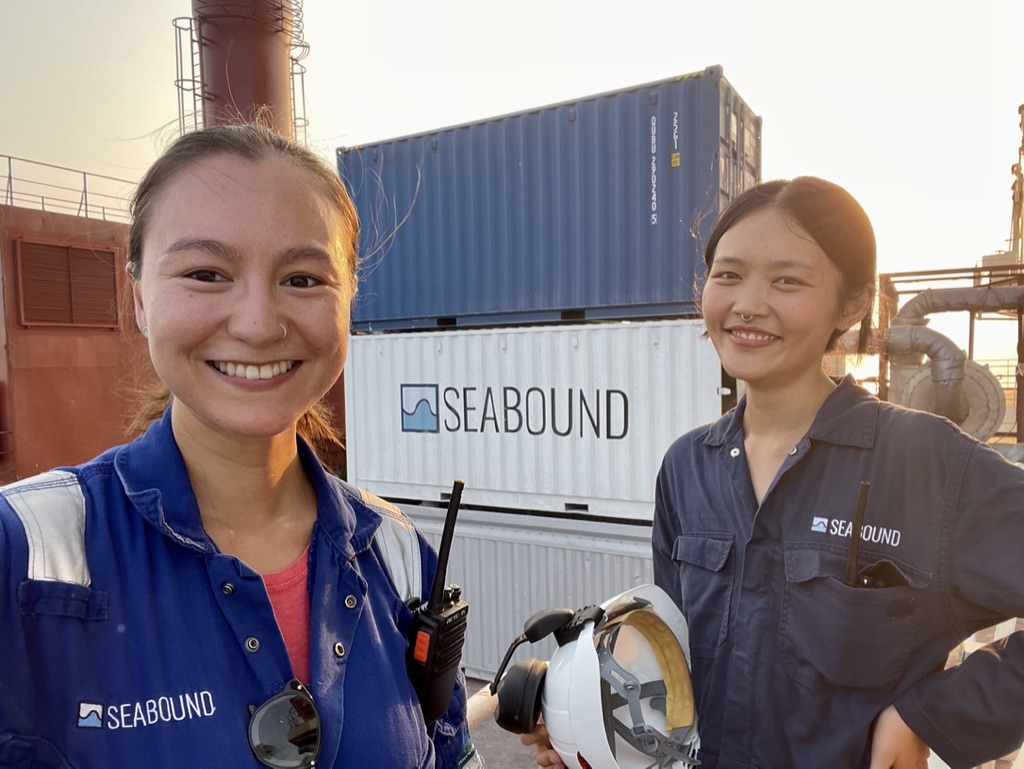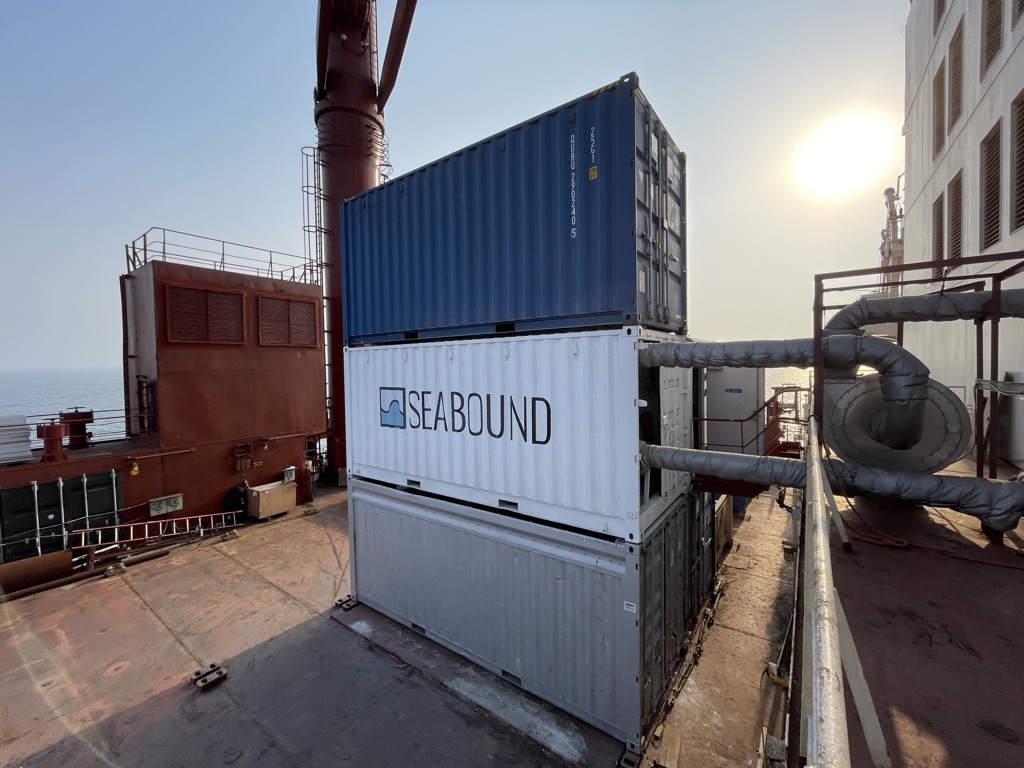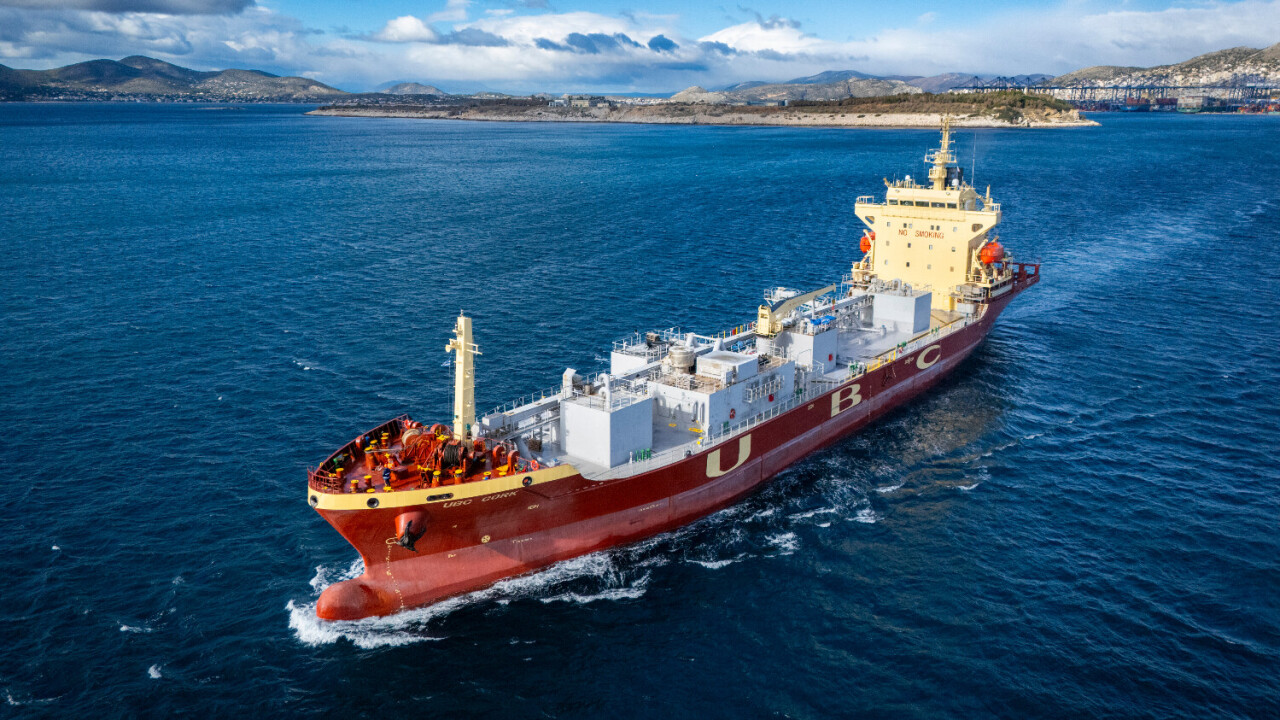A giant cargo ship is set to trap carbon from its exhaust and turn it into cement for use in onshore construction.
The technology, developed by UK startup Seabound, is billed as the world's first commercial carbon capture system for boats. It will be installed on the UBC Cork, a cement carrier owned by Germany's Hartmann Group.
“These are the systems we intend to scale across hundreds, and eventually thousands, of vessels,” Alisha Frediksson, Seabound's CEO and co-founder, told TNW. “We're therefore very excited to get them out into the world — to gather valuable data, optimise future iterations, and most importantly, to show the industry that onboard carbon capture is no longer just a concept.”

Seabound's carbon capture equipment traps the exhaust gas produced by the vessel's huge diesel engines and funnels it into a big, high-pressure chamber filled with calcium hydroxide pebbles.
The CO2 in the exhaust gas reacts with the pebbles and transforms into calcium carbonate — also known as limestone, the key ingredient in cement. That limestone is stored onboard and will be offloaded in Norway, where it will be delivered to Heidelberg Materials' cement plant in Brevik. There, it will be used to produce greener concrete on an industrial scale as part of Heidelberg's existing carbon capture facility.
Seabound claims its system can capture up to 95% of CO₂ and 98% of sulphur emissions from a ship's exhaust. Its modular design allows it to be bolted onto existing vessels with minimal changes. It offers the shipping industry a way to cut emissions immediately — but it can't replace the long-term need for cleaner fuels to replace diesel altogether.

A step toward cleaner voyages
Shipping accounts for nearly 3% of global emissions but is notoriously hard to decarbonise. Current battery technology simply cannot provide enormous cargo vessels with enough power to cover long distances. Nuclear propulsion has also been considered, but comes with risks and remains controversial.
Most experts agree that the best bet is alternative, zero-emission fuels, such as hydrogen and ammonia. But these are still in the early stages of development and require the building of entirely new ships.
Seabound's tech, then, could provide an interim solution to curb emissions from shipping, while we wait for other, more permanent fixes to be developed.
“Alternative fuels for ships are at least 10 to 20 years away, but we need to start decarbonising today,” Frediksson previously told TNW.
Seabound has already trialled its technology with shipping firms Hapag-Lloyd and Lomar Shipping. It's now looking to scale up its systems, targeting 100 million tonnes of CO₂ captured per year by 2040 — 10% of the shipping sector's total emissions.
This latest project, its first commercial endeavour, was co-funded by the EU's Eurostars startup programme and backed by the Cyprus Marine and Maritime Institute.
